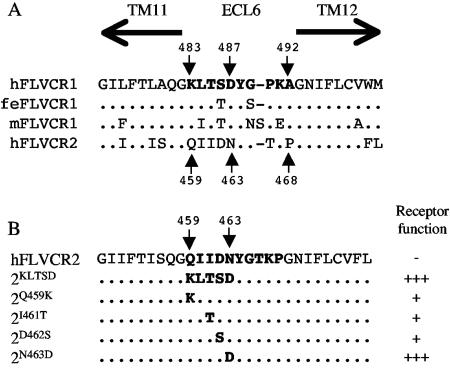FIG. 4.
(A) Comparison of presumptive ECL 6 sequences from human (h), feline (fe), and murine (m) FLVCR1 and from human FLVCR2. TM11 and TM12 are indicated by arrows above the sequence. FLVCR1 and FLVCR2 ECL6 residue numbers are indicated. Dots represent identical amino acids. (B) Mutations of human FLVCR2 ECL6 residues to FLVCR1 ECL6 residues. Dots represent identical amino acids. Also shown is the receptor function of the mutant FLVCR2, indicated by a plus sign, with each plus sign representing a 10-fold increase in virus infection titer on cells expressing the respective mutant FLVCR2 proteins. The minus symbol represents background infection.

